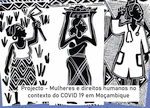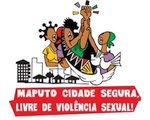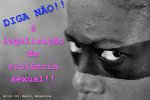Violence against women.
The psychological impact
Henny Slegh1
from flying over your head
but you can prevent them
from building nests in your hair
(Chinese proverb)
Introduction
A recent multi-country study of WHO (2005) on Women Health and Domestic Violence against Women shows that at least half of all women in Bangladesh, Ethiopia province, Peru, Samoa and Tanzania said that they had been physically or sexually assaulted after the age of fifteen. In general the vast majority of this violence was inflicted by a male intimate partner. Violence against women is a basic abuse of human rights.
In addition to the physical injuries, abused women suffer from health and psychological problems: “Abused women experience a range of feelings related to the violence from confusion about what brings on the violence to feelings of hopelessness about the possibility of stopping the violence, to feelings of isolation and depression from being under the violent control of their husbands. Sometimes women consider suicide as an option to escape violence” (Voices of the Poor, World Bank, 2000).
Much study has been done and articles have been written about prevalence of Violence against Women as a form of gender based violence. It is often described as an increasingly phenomenon worldwide with enormous impact on the life of victims, their families and society.
The definition of violence against women according to WHO (2000) encompasses manifestations of “physical, sexual and psychological violence occurring in the family and in the general community, including battering, sexual abuse of children, dowry-related violence, rape, female genital mutilation and other traditional practices harmful to women, non-spousal violence and violence related to exploitation, sexual harassment and intimidation at work, in educational institutions and elsewhere, trafficking in women, forced prostitution, and violence perpetrated or condoned by the state.”
Overwhelmingly, women rather than men are the major victims of violence and that is why I speak specifically about the psychological impact of violence against women. In this article I will discuss the psychological impact of Violence against Women in their lives. Setting limits to this abuse of human rights is not only a political act and statement. Understanding the psychological impact is of big importance in finding effective ways for support victims and societies. Knowing how to recognize signals and hidden suffering are essential for a multidisciplinary intervention in reducing and ultimately eradicating its incidence.
Politics and research into effects of trauma
The most common reaction on cruelties in life is to banish them out of consciousness. An ingenious psychological defensive system of denial and maintaining silent are surviving strategies to try to forget and not give words to what is considered as too cruel to exist in human life. The conflict between keeping silent and the will to cry out with pain is inherent to psychological trauma. It is a process that takes place both on individual and on social level. Cruelty needs to be told, before it can rest. In societies there is a need to return to order and justice, at individual level a person will always seek for meaning and solution. Recognition of what happened is essential in the process of reconciliation or personal recovering.
Giving words and publicity to abuse of human rights in a society is strongly related with political movements. History shows us how political movements played a key role in awakening public consciousness about painful and shameful realities that human life covers. Over 100 years of study on psychotrauma in western countries show this relation between political movements and disclosure of human suffering caused by abuse of human rights.
At the end of the 19th century a movement against clericalism in French initiated research to hysteria. Till then hysteria was considered to be an unpredictable women’s disease. Results of research proved a relation between the symptoms of the disease and sexual abuse in childhood. In the beginning of the 20th century peace movements and movements to outlaw war accompanied research into effects of psychotrauma related to war. By the end of the century research in this area had as main goal to liberate women out of unequal power relations and violence.
Feminist movement
The feminist movement has been essential in stimulating this development. In the early seventies research was done by two American feminists (Burgess and Holmstrom, 1972). They concluded that the effects of rape, domestic violence and sexual abuse are in fact the same as the effects found on war survivors. Women who had been victim of violence or rape described their fears during these experiences of violence as life threatening and as an intense fear to die or to be mutilated forever. After the event they suffered of complaints such as sleeping problems, nausea, nightmares, jumpiness, frightfulness and they showed symptoms of dissociation and deafening. Over the past thirty years a lot of study has been done and until today new literature and results are published and discussion about the subject takes place in the media.
It is clear that seeing and recognizing effects of domestic violence and sexual abuse is not only a matter of proving injuries by showing physical wounds and immense psychological suffering. It is also highly a matter of a political climate that allows seeing this injustice and that responds by making efforts to stop it. Important instruments in limiting violence against women are a legal system that criminalizes aggressors, a health system that creates space for women to heal their wounds and a sociocultural system that allows women to reintegrate and rebuild their lives in peace.
PTSD; value and limits of the concept
In 1980 the concept of PTSD (Post Traumatic Stress Disorder) was introduced by the American Psychiatric Association as a new psychiatric disorder. The concept has been developed on basis of the experiences of Vietnam War veterans. After returning from the war they had all kinds of problems and difficulties in reintegrating in family and social life. They were suffering of several symptoms of psychological stress caused by memories of experiences during the war.
Since this concept has been introduced in the Diagnostic Statistical Manual of mental diseases, it became clear that the psychological syndromes of survivors of sexual abuse and domestic violence in fact were the same as the syndromes found by war victim survivors. “Women and children that are abused and violated are victims of war. Hysteria is the war neurosis of the war between sexes” (Herman, 1992).
PTSD is a western oriented diagnosis of mental health diseases and the usefulness of this concept as a diagnose in non-western countries is still under discussion, for instance because the use of the term trauma tends to medicalize problems that are profoundly political and social. However, there is no doubt that PTSD contributes to the recognition of the effects of traumatic events such as domestic violence on public and mental health. Women suffering from consequences of domestic violence are not crazy or abnormal – the truth is simply that they are severely affected by cruel events that completely changed their lives and well-being. And although the cultural, socioeconomic and political context has to be kept in mind, the personal suffering after such a traumatic event also needs personal attention. Psychological knowledge in attending victims and psycho education as means to support families and communities are of great importance. The truth commission in South Africa after Apartheid is an example of an intervention program using knowledge of psychotrauma research.
Post traumatic stress reactions
The definition of trauma is that is involves all events and actions that can result in death, as well all serious injury, or a threat to the physical and psychological integrity of the self or others. A person’s response to such events involves intense fear, helplessness and horror (DSM IV).
A distinction has to be made between events that occurred once and are limited in time (e.g. a car accident, a flood) and events that are not isolated but occur in an ongoing situation (e.g. war, domestic violence). Type I traumas are produced by single events and Type II traumas result from prolonged and sustained exposure to repeated stressors. The normal reactions that can be expected after surviving a traumatic experience are: having strong memories of the events, nightmares, alertness, anxiousness and fear, substance abuse, talking a lot, sexual problems, body pains, sadness, anger and aggression, feeling hopeless, feeling guilty, not trusting others, isolating oneself, etc.
The reason for these strong responses is that it feels as if the experience gets trapped inside the body and mind. It was so horrible and painful, that people try to forget or avoid what happened. Trauma survivors switch between trying to forget what happened and being upset by intense memories of the event. This reaction is completely normal and lasts for a few days or weeks. When women get the right support from family or others, this can help her to understand the reactions so that she does not feel as if she is going mad.
In cases of Type 1 trauma, most of the persons can recover completely, especially when they get the support of family or friends that is needed. In cases that the reactions stay longer than three months, special attention is needed.
Domestic violence is a type II trauma, or so called complex PTSD, the reactions can last for a long time, even years. Judith Herman refers to complex personality changes that can be caused by long lasting or continuous traumatizing experiences such as abuse and incest and domestic violence. She describes several categories of symptoms such as somatization, changes in regulation of affect and impulses, dissociation, changes in identity, changes in perception of the perpetrator, changes in relationships with others and changes in experiencing meaning of life. Finally, Herman states, depression is the most common finding in virtually all clinical studies of chronically traumatized people (Herman, 1992).
Van der Kolk (2000) mentions that in children victims of abuse, in cases of rape of women by male partners, often appear reactions that are sustained for a long time. A woman that is victim of violence committed by her husband or intimate partner has a very high risk to develop mental health problems that will affect not only her but her children as well. The events will affect her behaviour, the way she will relate with others, her perception of Self and Self-esteem and her spiritual and existential being.
Physical health
Women showing post traumatic stress reactions exhibit a variety of physical symptoms. Some might complain of symptoms related to the part of the body exposed to traumata, especially in case of exposure to physical violence. Others might have problems in the form of sexual dysfunction, sexually transmitted disease, musculoskeletal problems, chronic pain, and functional disturbances. Rape victims in particular report symptoms in the form of chronic pelvic pain, headaches, and gastrointestinal disorders and menstrual problems. Undesired pregnancy, miscarriage and induced abortion, as well as high HIV risk, can all be results of the violence.
Providers of reproductive health services therefore may be more likely than other health providers to see abused and violated women. That gives them an important responsibility and task in recognizing the symptoms and signals of the women in addressing the physical needs and facilitating the psychological needs and everything needed to stop the cycle of violence by legal action.
Mental health
Several studies in western countries show a strong development of mental disorders after traumatic events of type II. Longer term and more serious reactions range from PTSD (Friedman & Jarsanson, 1994), depressive disorders (Westmeyer, 1986), substance abuse (Keehn, 1980), panic disorder, generalized anxiety, phobia, antisocial and other personality disorders. The co-existence of somatic complaints has been noted (Mc Farlane, Atichson and others). However, reference can also be made to interesting studies (Jablensky, Mrsella, Ekblad, 1994; de Jong, Komproe, Van Ommeren, Van der Put, 2001) in low-income countries on refugees and public mental health. These studies concluded that refugees have a higher risk to develop a mental health disorder in case of the following factors:
- traumatic events related to armed conflict
- torture
- female gender
- socioeconomic hardship and poverty
- unemployment and lack of professional skills
- problems of marginalization, discrimination
- poor physical health due to poor health care and poor sanitation
- poor nutrition
- poor physical conditions including head trauma and other physical injuries
- collapse of social networks resulting in anomy, alienation and poor social support
- traumatic events such as death, loss, or fear
- daily hassles of life stress
- failure to cope after the first month after the traumatic events
- perceived lack of control over the traumatic events
It is interesting to compare these factors with the situation of women in domestic violence situations in low-income countries. Many of these factors also apply to their position. It is therefore more or less implicit that these women also have higher risks to develop mental health problems. The risk factors, however, may be balanced by protective factors. These protective factors provide keys in creating support and prevention programs.
Some examples of protective factors are:
- the presence of a social network, including a nuclear or extended family
- social self-help groups for empowerment and sharing
- employment or other possibilities of income generation
- access to human right organizations
- access to public services such as health care, police protection and fair justice
- the possibility to perform cultural rituals and ceremonies
- political and religious inspiration as a source of comfort, meaning and a perspective for the future
Individual and Family life
The well-being and functioning of a woman, victim of domestic violence and sexual abuse, is severely affected and disturbed by these experiences. Her personal health, her role as mother, wife, income generator and employer will all be affected. Her children have higher risks to develop a serious mental health problem or become victims or perpetrators in adult life. This creates a vicious circle of violence.
Some studies we are taking in account show that children living in a family environment of domestic violence against their mothers are 1.500 times more in risk above the national media to be themselves victims of abuse (Van der Kolk, 2000). According to WHO (2001) children who are victims of violence or sexual abuse run a high risk of themselves becoming perpetrators of similar forms of abuse in relation to younger children.
Witnessing frequent violence at home can be conducive to the development of aggressive behaviour: Lewis et al. (1983) studied homicidally aggressive young children. They found that the most important factor that contributed to those acts of violence was having a father who behaved violently and who showed himself able to become homicidal.
Community and society
The WHO multi-country Study on Women’s Health and Domestic Violence (2005) demonstrates that violence against women is widespread and deeply ingrained, and has serious impacts on women’s health and well-being. As is written in their conclusions: “Its continued existence is morally indefensible; its cost to individuals, to health systems, and to society in general is enormous. Yet no other major problem of public health has – until relatively recently – been so widely ignored and so little understood.”
A brief summary of their category list for recommendations:
- strengthening national commitment and action
- promoting primary prevention
- strengthening the health sector response
- supporting women living with violence
- sensitizing criminal justice systems
- supporting research and collaboration
Conclusion and recommendations
Violence against women is a basic violation of Human Rights and an extreme destructive power for a community and society. There is nothing natural on violence, violence has nothing to do with accepted cultural norms. Increase of violence in families and communities could be symptoms of loosing control, fighting against gender role change, gaps in juridical, economical and health systems to set limit, process of acculturation, etc. As long as nations and societies keep their eyes closed for violence against women and children, they are in psychological terms in a process of self destruction.
To damage and to lose the constructive forces of women in a society is an extremely high cost case. Damaging the confidence and trust of children in justice, security and peace will give more risk for them to grow up as aggressive, criminal adults or become victims of others. They become a serious danger for peace and further development of the society.
Violence and destructive behaviour have always existed and will always exist on earth. You cannot prevent birds of sorrow from flying over your head. However, the national and international community has a huge responsibility in setting limits to criminal aggressors and helps their victims preventing them from building nests in your hair. The recommendations of the WHO are more than urgently needed to liberate women out of this unhealthy injustice and ill making situations.
- Psychotherapist, advisor in the area of attendance of victims of domestic violence, Fórum Mulher
References:
BURGESS, AW; HOLMSTROM, LL. (1974), Rape trauma syndrome. In: American Journal of Psychiatry, 131 (9). pp. 981–986
DE JONG, J., KOMPROE I., VAN OMMEREN, M., VAN DE PUT, W. (2001), Lifetime events and post-traumatic stress disorder in four post-conflict settings. In: Journal of the American Medical Association, 286. pp. 555-562
FRIEDMAN, M.; JARSANSON, J. (1994), The applicability of the post-traumatic stress disorder concept to refugees. Washington DC: American Psychological Organisation.
HERMAN, Judith (1992), Trauma and recovery. New York: Basic Books.
JABLENSKY, A.; MARSELLA A.; EKBLAD, S. (1994), Amidst peril and pain: the mental health and well-being of the world’s refugees. Washington D.C.: American Psychological Organisation.
JABLENSKY, A.; MARSELLA, A. J.; EKBLAD, S.; JANSSON, B.; LEVI, L.; BORNEMANN, T. (1994), Refugee Mental Health and Well-Being: Conclusions and Recommendations. In: A. J. Marsella, T. Bornemann, S. Ekblad, & J. Orley (Eds.), Amidst Peril and Pain. The Mental Health and Well-Being of the World’s Refugees. Washington DC: American Psychological Association.
KEEHN, R. (1980), Follow-up studies of World War II and Korean conflict prisoners. In: American Journal of Epidemiology, 111. pp. 194-211
LEWIS. J. et al. (1983), Trauma and recovery. New Cork: Basic Books/Harper Collins Publishers.
NARAYAN, D. (2000), Voices of the Poor. Crying out for change, Oxford: Oxford University Press (World Bank).
VAN DER KOLK, 2000, Post-traumatic stress disorder and the nature of trauma. In: Dialogues in clinical neuroscience 2(1). pp. 7-22
WESTERMEYER, J.; WILLAMS, C. (1986), Refugees’ mental health issues in resettlement countries. New York: Hemisphere.
WHO (2000), “Violence against women”. Fact sheet Nº 239
WHO (2001), “Children: abuse and neglect. Fact sheet Nº 150
WHO (2005), Multi-country Study on Women’s Health and Domestic Violence against Women.







 Information in English
Information in English



















